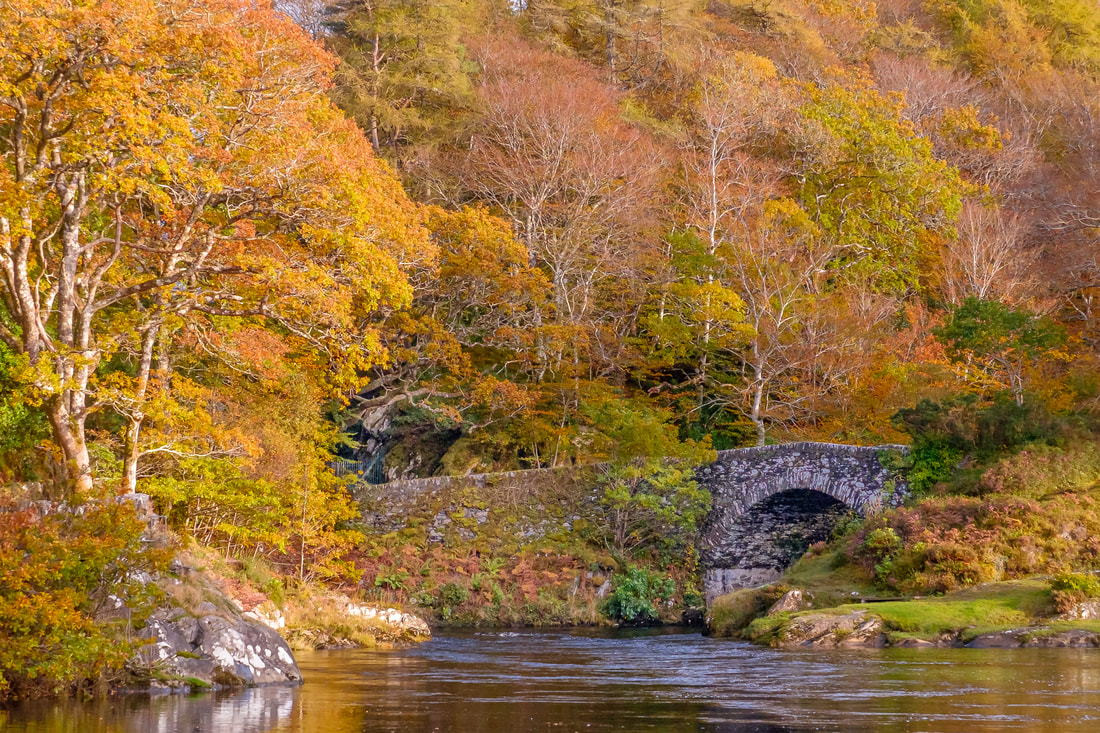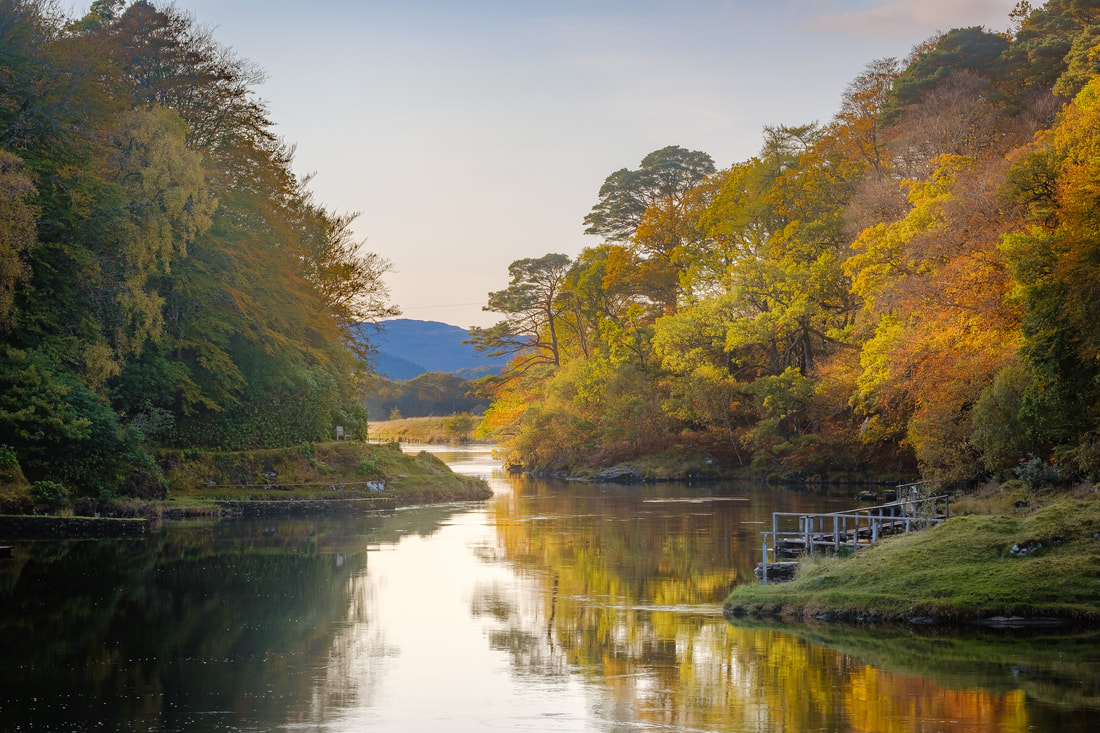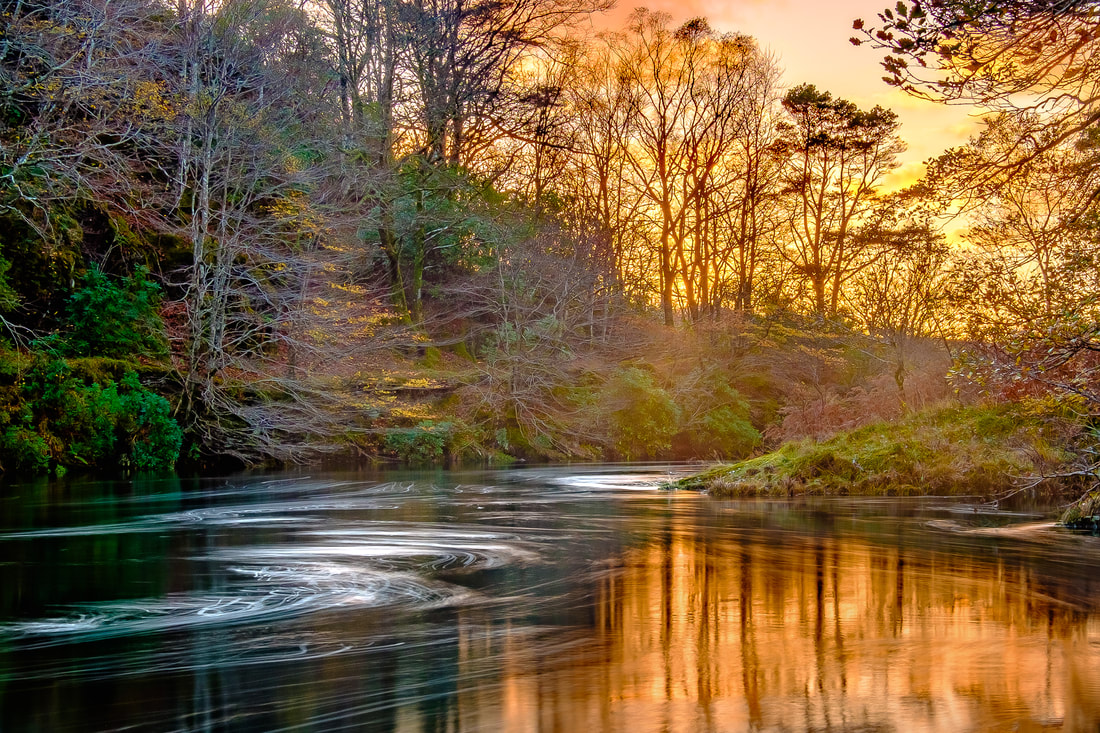|
We are now in well in to October, the second month of meteorological autumn. It is when the number of visitors to the Peninsula reduces, the days become shorter, the nights become cooler, and the sun gets lower in the sky. This brings a quietness to the area and a quality of light that cannot be found at any other time of the year which, when combined with the autumn colours, makes what is a photographer’s paradise even more perfect than it already was. By the middle of the month most of the numerous wooded areas around the Peninsula are normally at or near their “autumn peak”, having swapped canopies of green for tapestries of vibrant reds, golds and ambers. The image above was taken around this time in 2019, which was a particularly good year for the autumn colours, and it shows the trees around the Old Shiel Bridge at Blain in their full autumn splendour. The Old Bridge was built by Thomas Telford in 1804. It spans a narrow chasm through which the waters of the River Shiel pass and seem to come to the boil before they expand in the House Pool, slow down and then run both still and deep. This single span bridge provides an interesting subject that can be photographed from many different angles. This, combined with how the smooth waters of the House Pool and the river downstream of it reflect the autumn colours, make it the perfect place to capture the splendour of the trees at this time of the year. I’ve visited the bridge a few times over the last week or so to find that the arrival of the autumn colours is not quite as advanced as it normally is. Indeed, I can’t help feeling it is a week or two behind and although there are now hints of golds in the landscape, I find my myself wondering if their late arrival means that there will be a poorer show this year.
So, what makes for a good show of autumn colours? Well, the answer lies in the fact that leaf colour comes from pigments, which are natural substances produced by the leaf cells to help them obtain food. There are three pigments: chlorophyll (green), carotenes (yellow) and anthocyanins (reds and pinks). It is the mix of them, as influenced by the weather, that determines depth of colour we get each year:
In addition to this, a warm dry 'Indian summer' is needed so that the leaves work for longer and therefore stay full of these pigments until the reducing hours of daylight and lower night temperatures trigger the colour change. So, if we’re to have another great show of autumn colours this year, let’s hope for some settled weather over the next couple of weeks, followed by some cold nights and dry, bright sunny days.
0 Comments
|
AuthorHi, Archives
July 2024
Categories
All
|
Steven Marshall Photography, Rockpool House, Resipole, Strontian, Acharacle, PH36 4HX
Telephone: 01967 431 335 | Mobile: 07585 910 058 | Email: [email protected]
Telephone: 01967 431 335 | Mobile: 07585 910 058 | Email: [email protected]
All Images & Text Copyright © 2024 - Steven Marshall - All Rights Reserved




